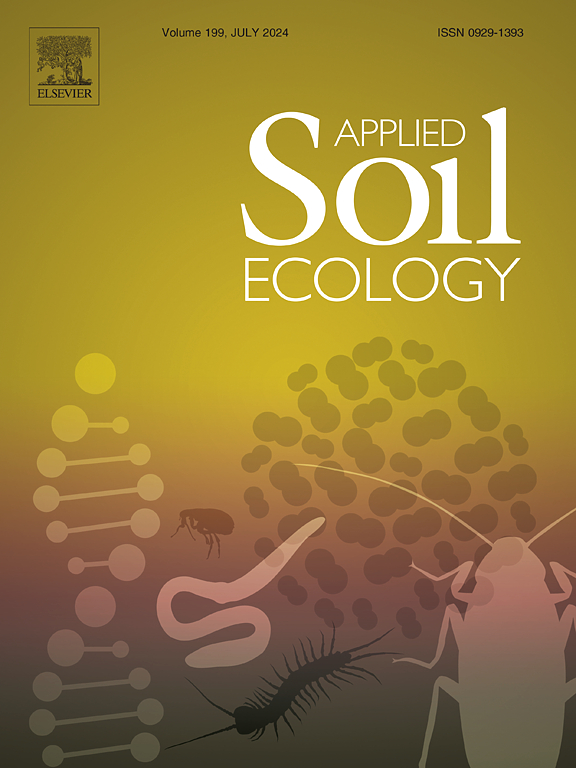Ecological biogeography of maize rhizosphere underpins spatial variation of bacteriome and phylotypes for maize productivity
IF 4.8
2区 农林科学
Q1 SOIL SCIENCE
引用次数: 0
Abstract
Sustainable food production systems in developing countries require resilient production of crops like Zea mays (maize) that could be improved through an understanding of its rhizosphere bacteriome. Maize rhizospheres in six locations, representing two hemispheres (southern: Ma2R, Ma3R, and BaMR; northern: MF1A-R, MF2A-R, and MF3A-R; 1023 km apart), were assessed for soil-solution chemistry and 16S rRNA microbiome. Varied concentrations of heavy metals and organochlorine compounds were observed in the rhizospheres, where cadmium (>0.8 mg/kg desirable levels in unpolluted soils) and endrin influenced the bacterial community of the rhizospheres. The dominance of Proteobacteria, Actinobacteria, Firmicutes, Acidobacteria, Chloroflexi, Planctomycetes, Verrucomicrobia, and Bacteroidetes with apparent variations was observed across the locations. Firmicutes (as evidenced by the Bacillus fumarioli group) varied significantly in MF2A-R with BaMR (t = 2.96), Ma2R (t = 3.13), and Ma3R (t = 3.99). Remarkably, Proteobacteria (represented by Bradyrhizobium japonicum group) was relatively higher in the maize rhizosphere from the southern (BaMR, 37.6 %; Ma2R, 24.8 %; Ma3R, 37.8 %) than in northern (MF1A-R, 22.1 %; MF2A-R, 25.6 %; MF3A-R, 27.1 %) hemispheres. The phylogenetic diversity index revealed southern rhizospheres had greater bacterial diversity (average, 4792-factor) vis-à-vis northern rhizospheres (average, 4621-factor) with 0.11 % of the total variance (P < 0.05). Canonical correspondence analysis and other beta-diversity indexes established ≥19 % variance between the southern and northern rhizosphere as the bacteriome related to soil chemistry and oligotrophic fluxes through ≥62 % variability. The dominant rhizobacteria reported would help refine the search for site-specific microbial tools needed in sustainable maize production.

求助全文
约1分钟内获得全文
求助全文
来源期刊

Applied Soil Ecology
农林科学-土壤科学
CiteScore
9.70
自引率
4.20%
发文量
363
审稿时长
5.3 months
期刊介绍:
Applied Soil Ecology addresses the role of soil organisms and their interactions in relation to: sustainability and productivity, nutrient cycling and other soil processes, the maintenance of soil functions, the impact of human activities on soil ecosystems and bio(techno)logical control of soil-inhabiting pests, diseases and weeds.
 求助内容:
求助内容: 应助结果提醒方式:
应助结果提醒方式:


